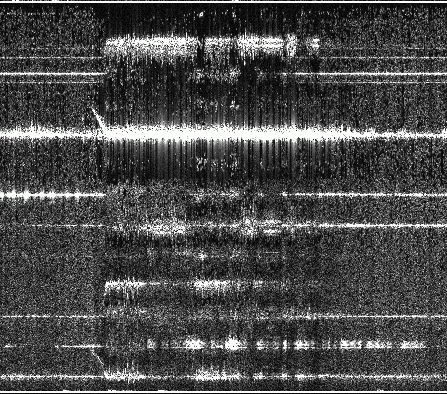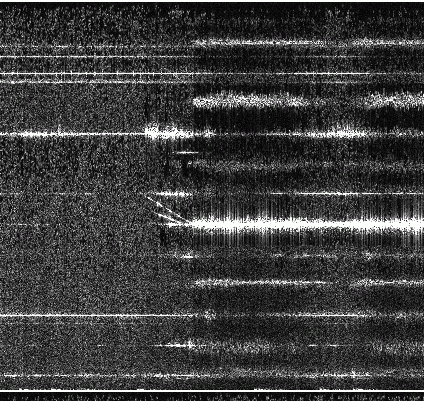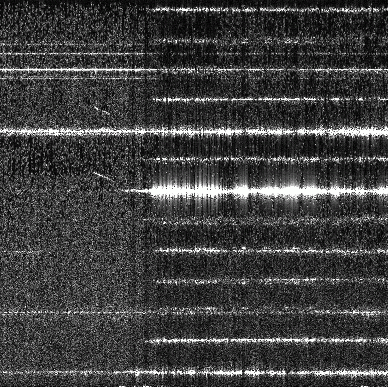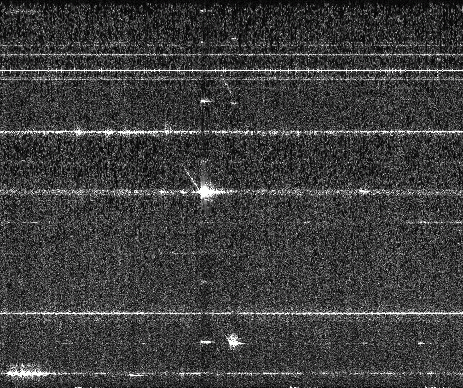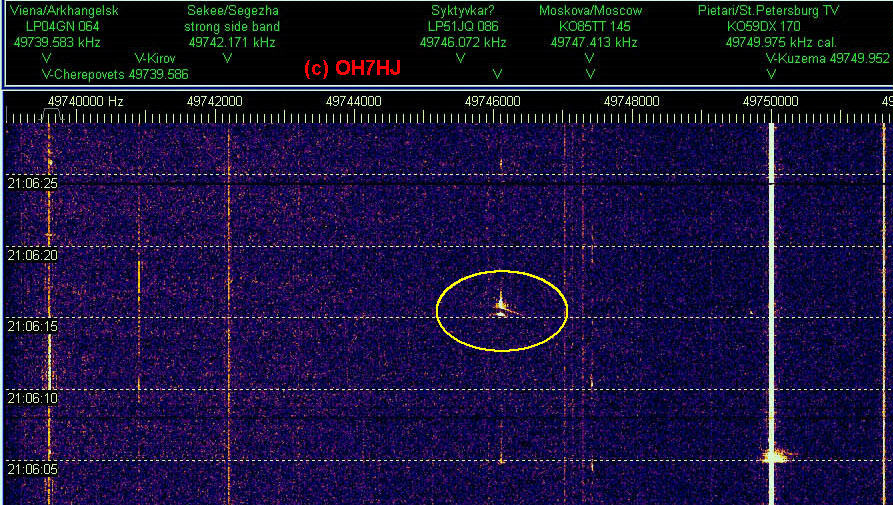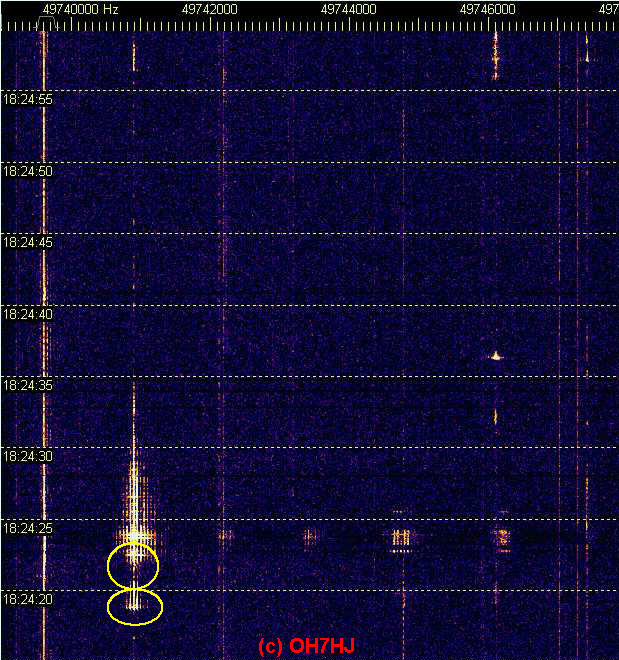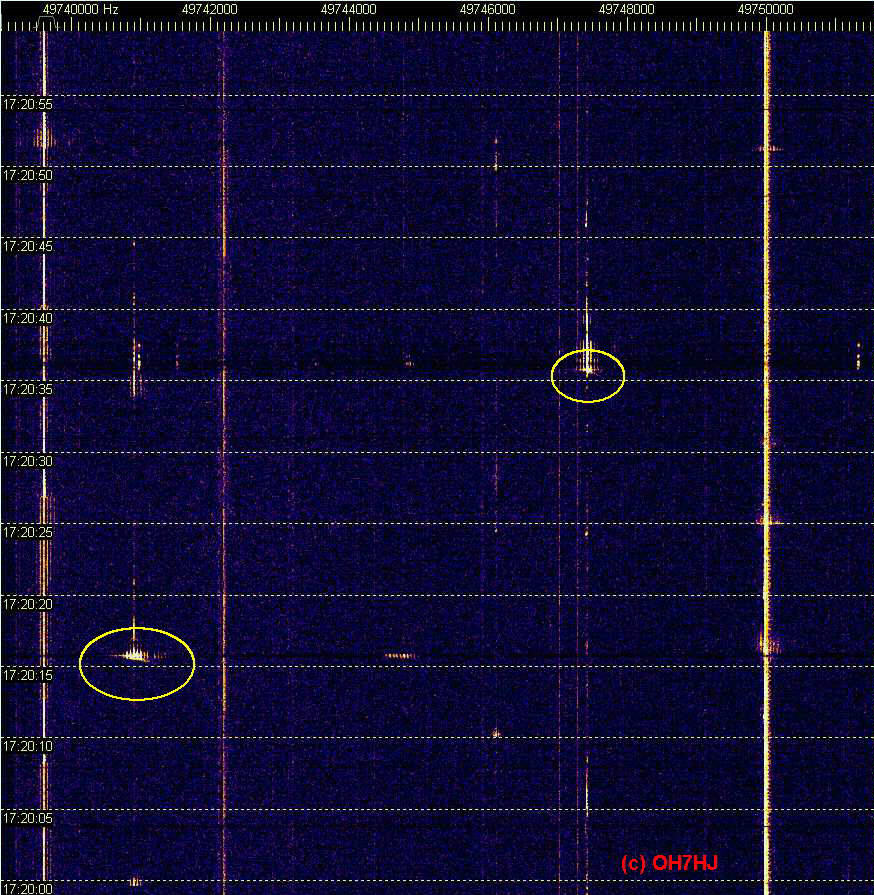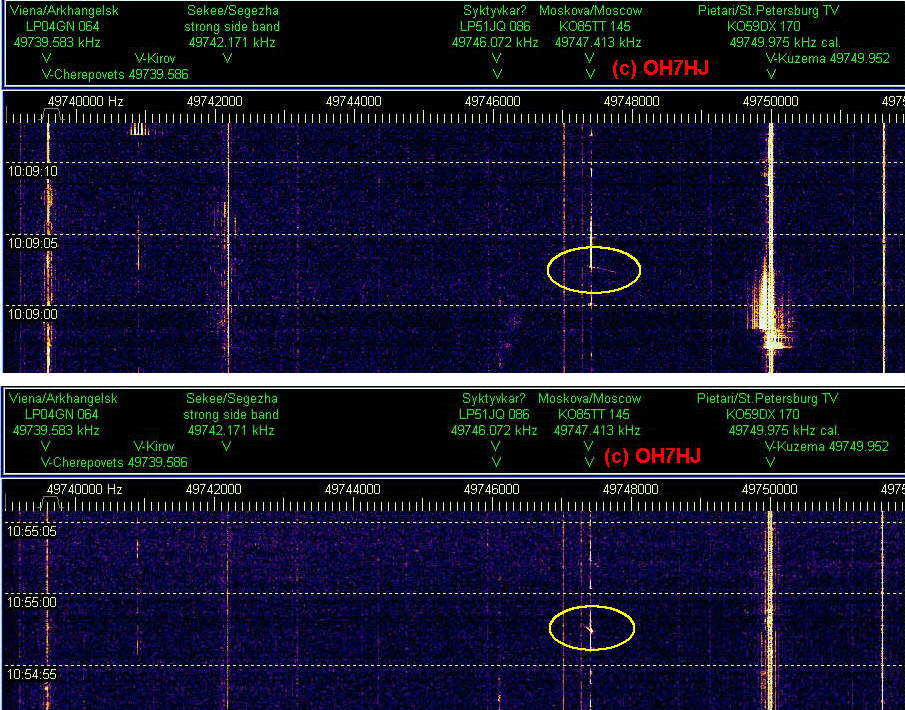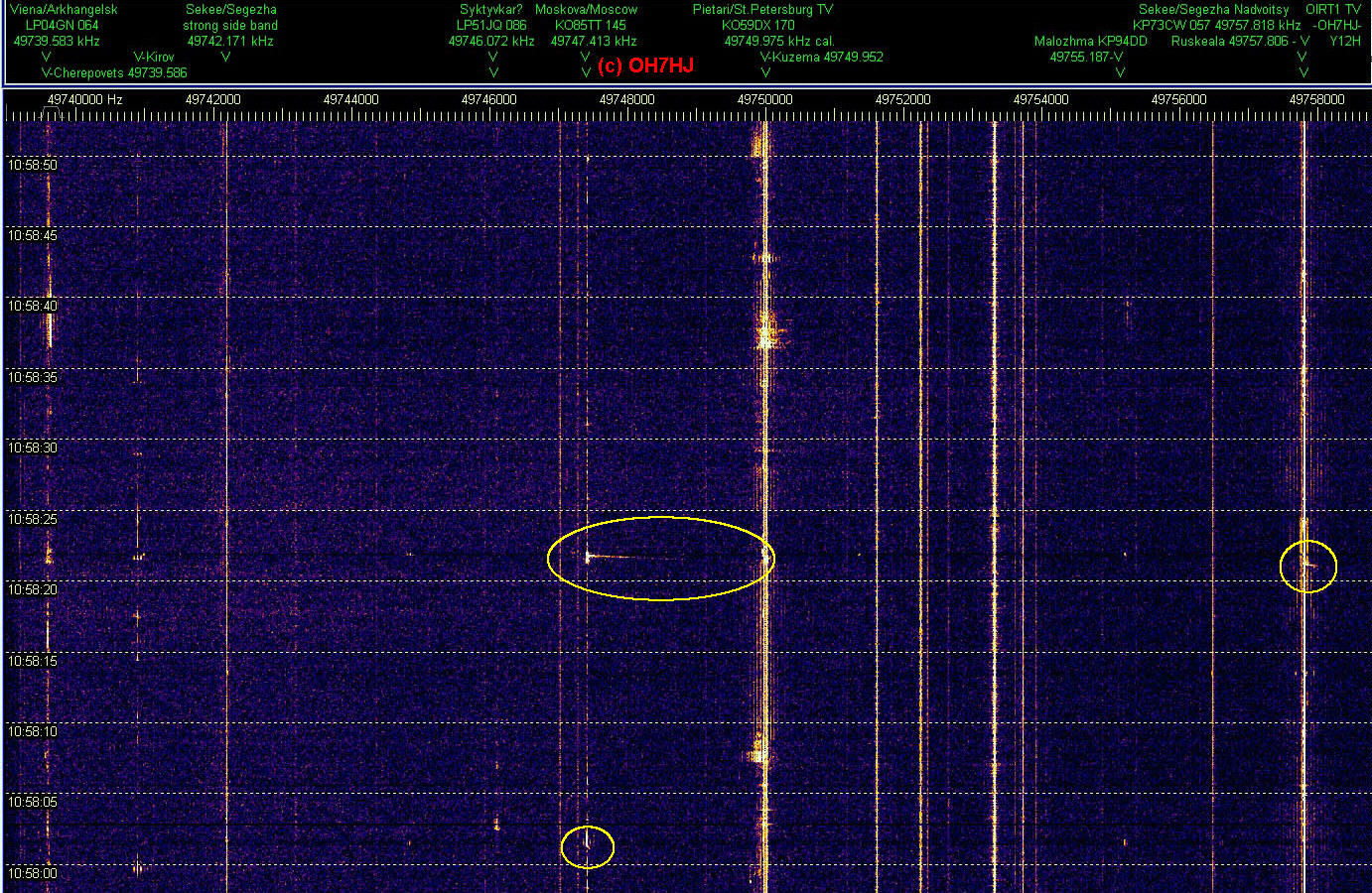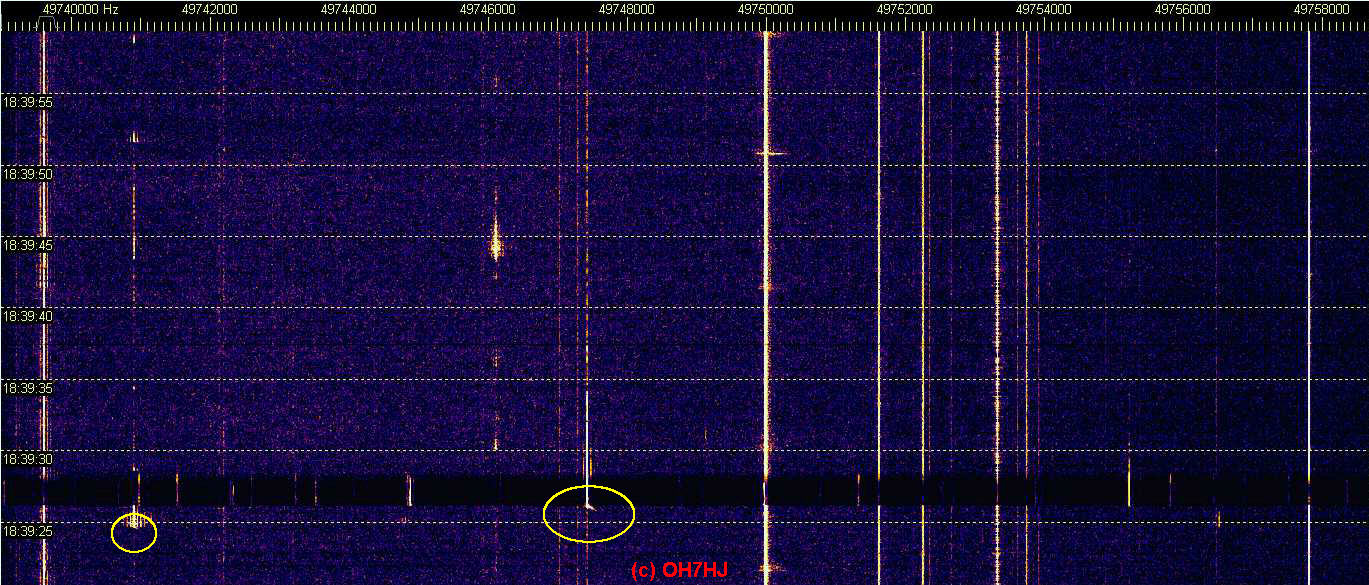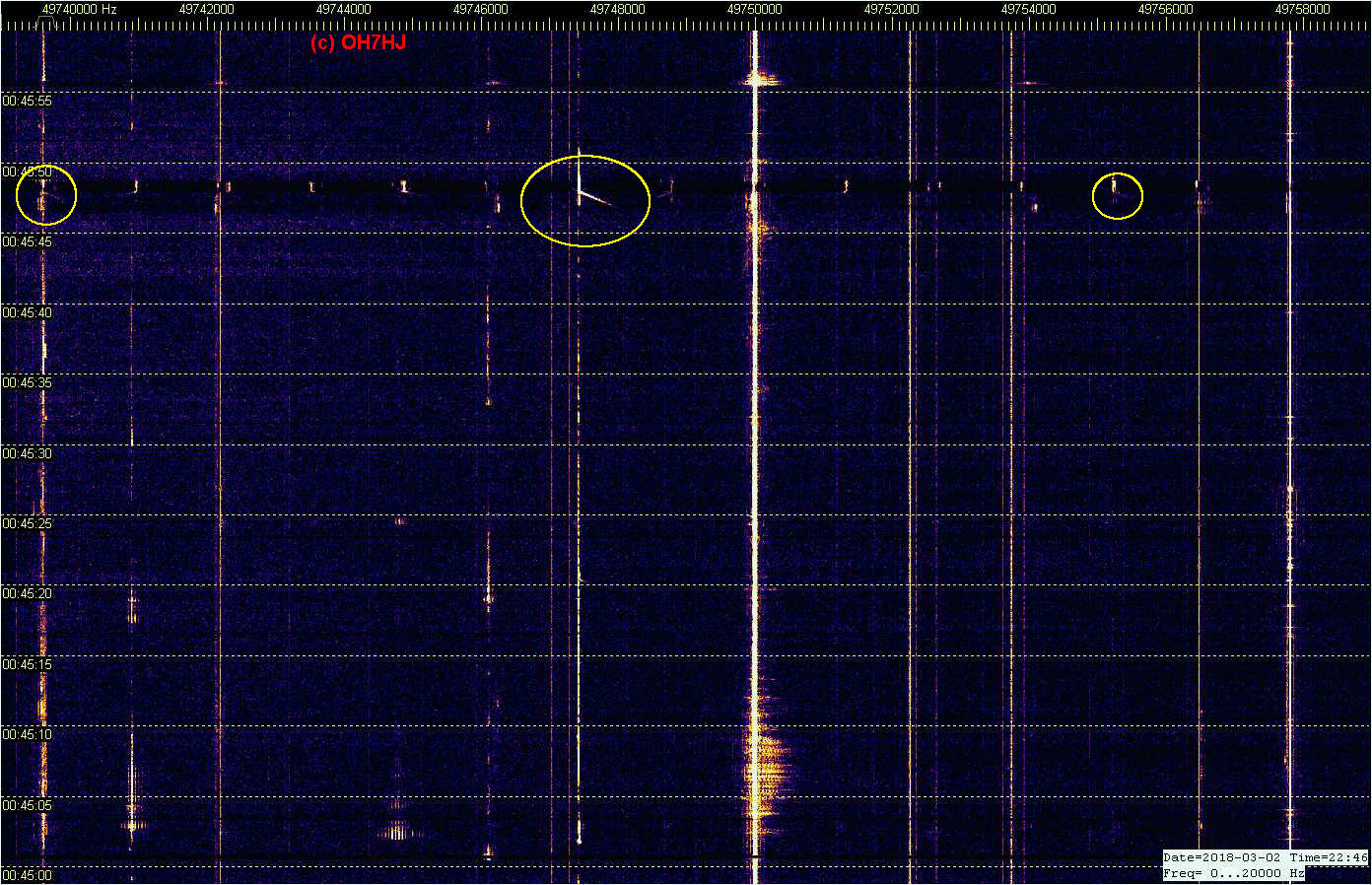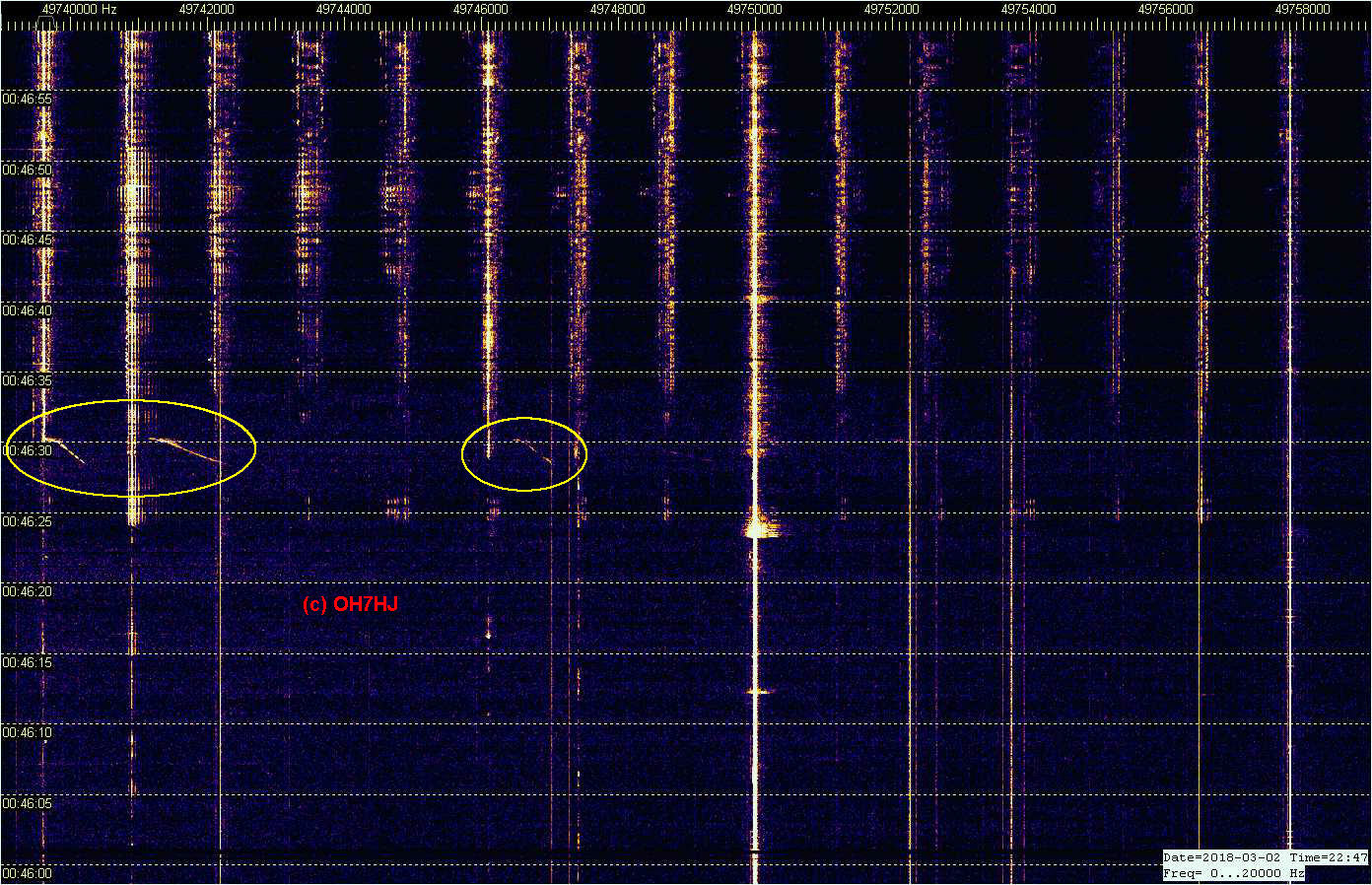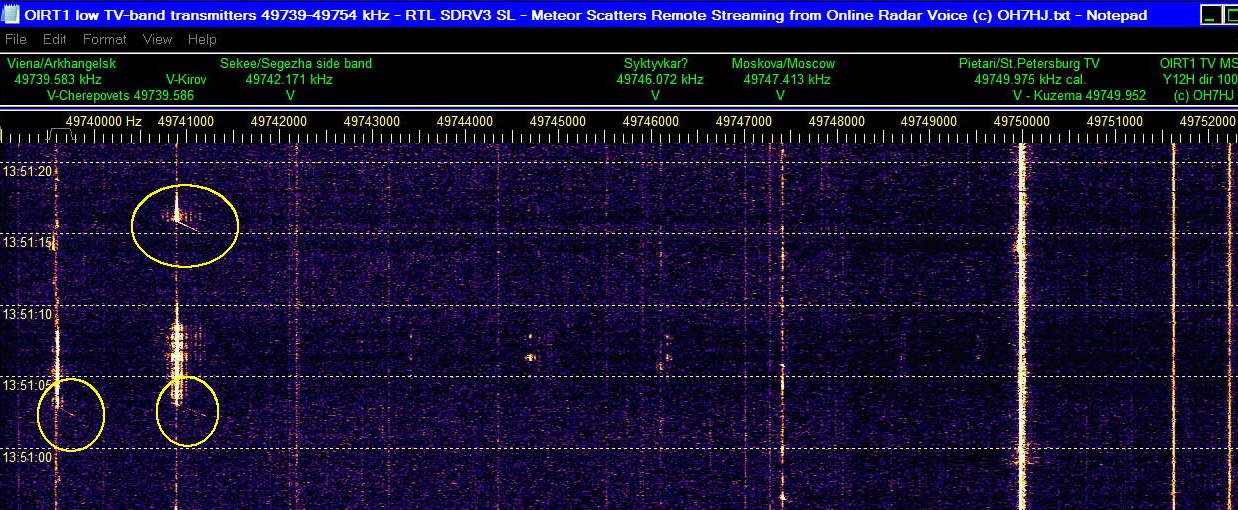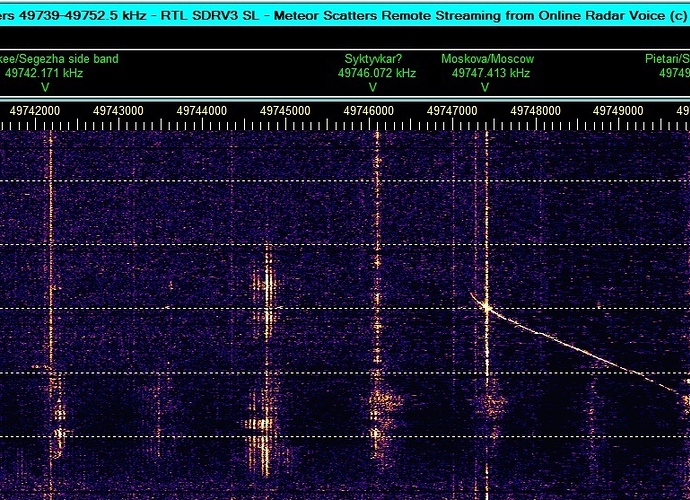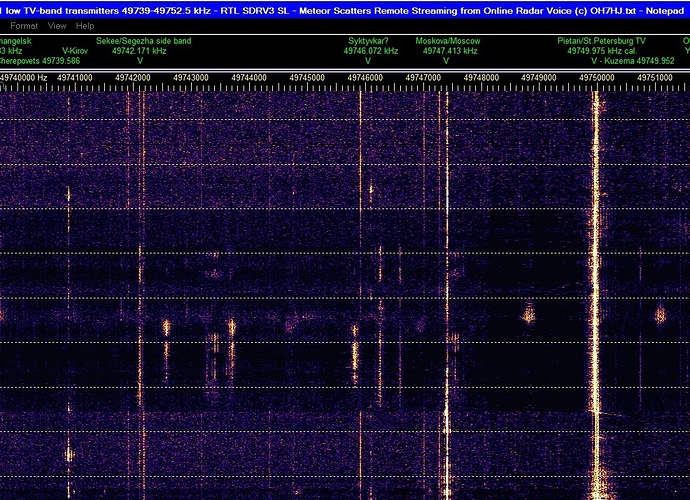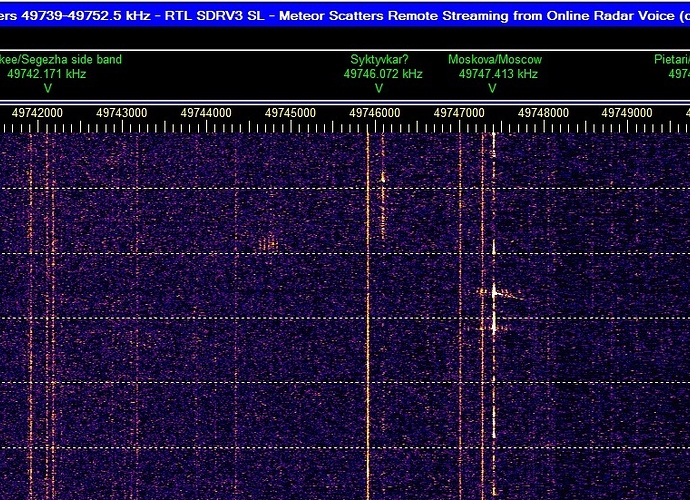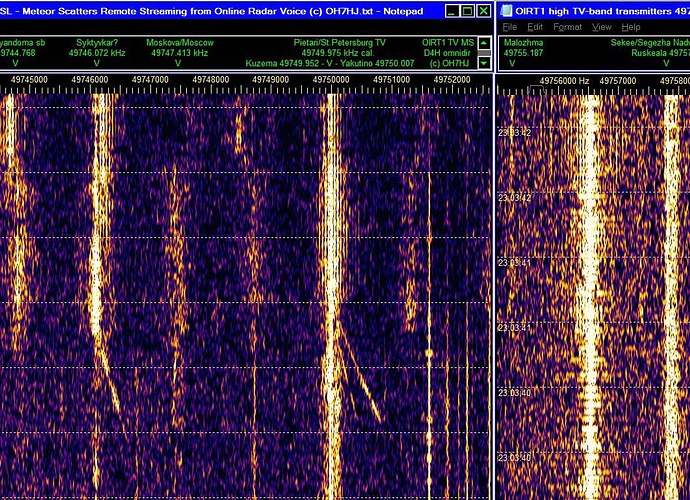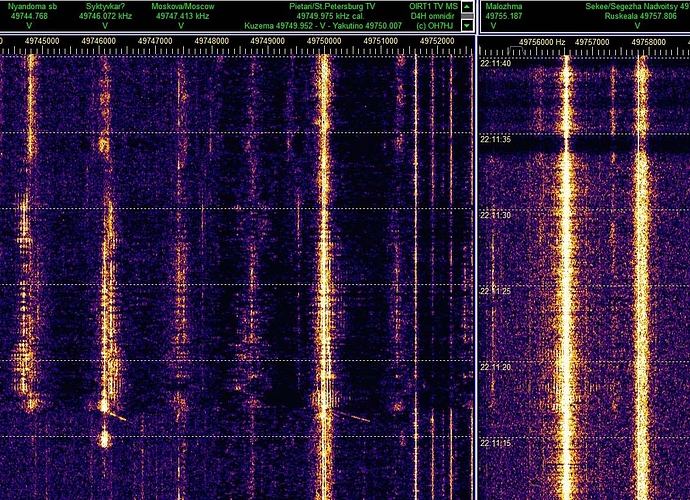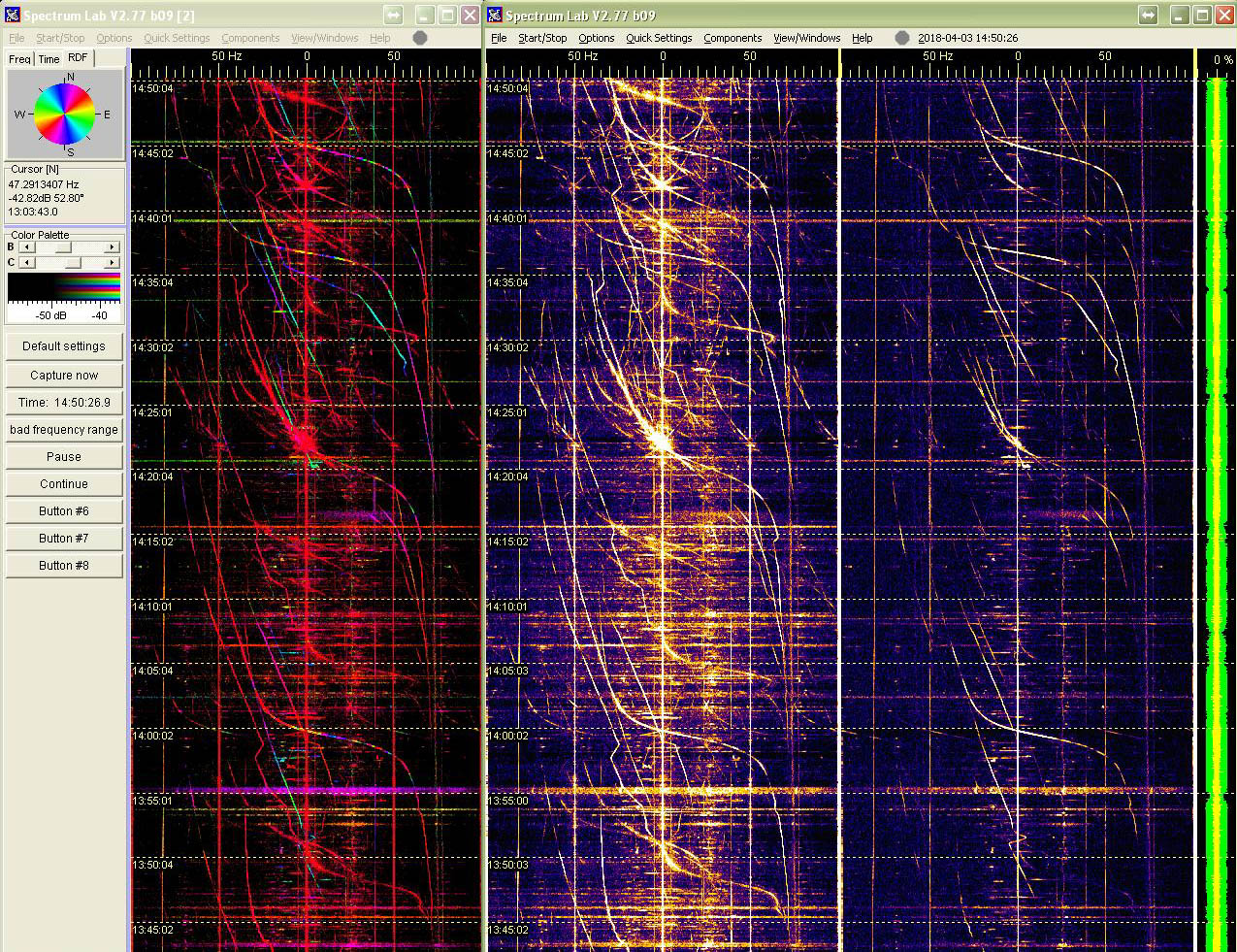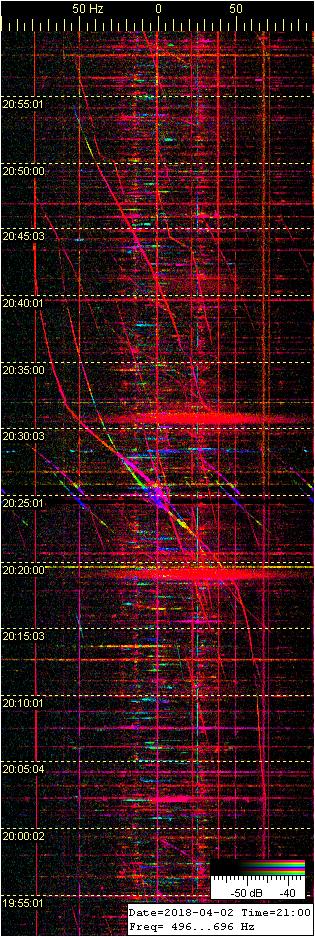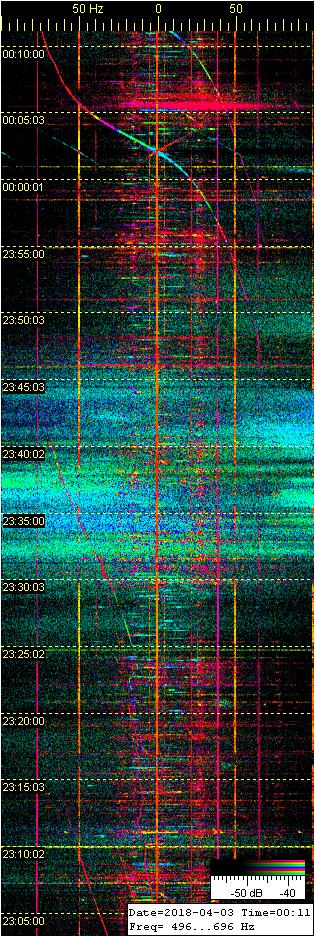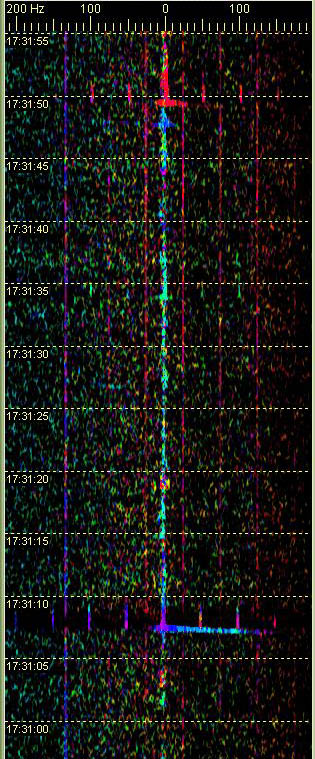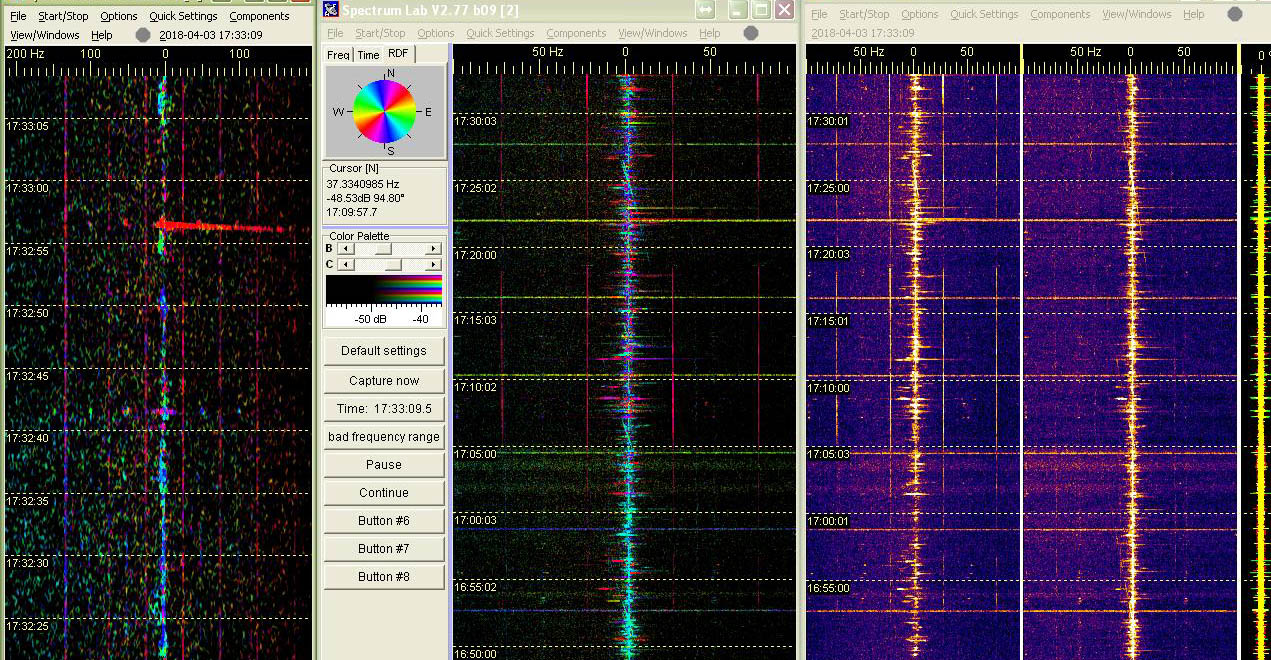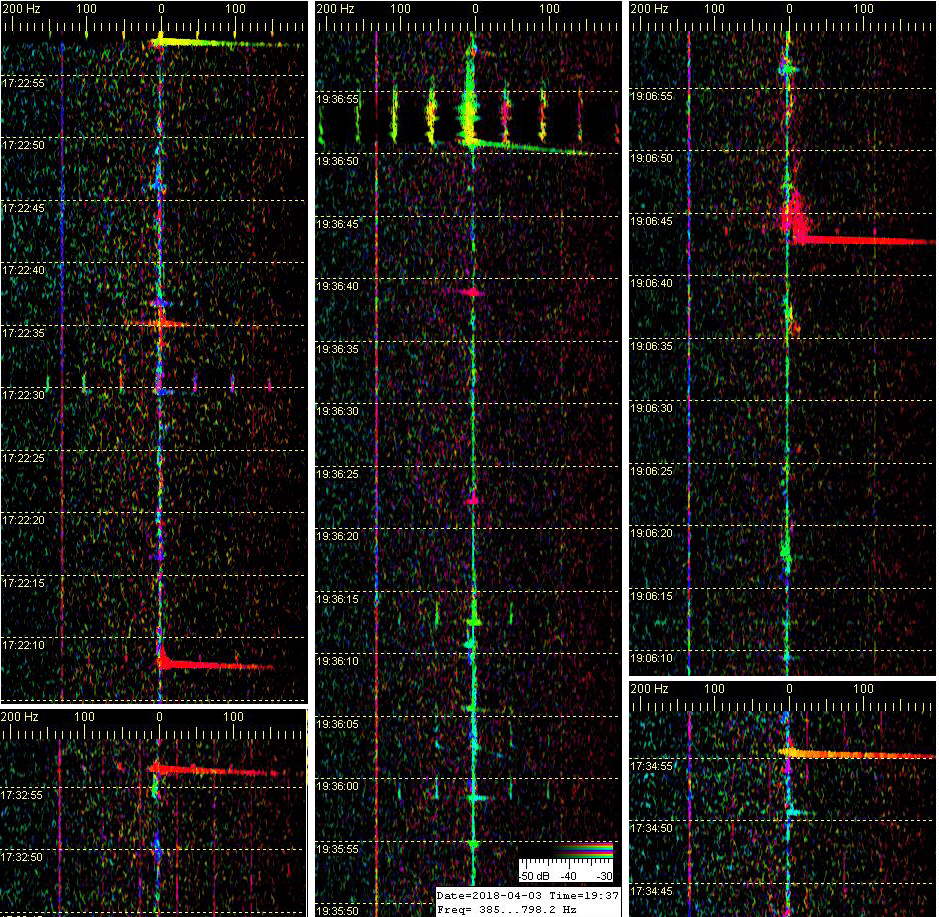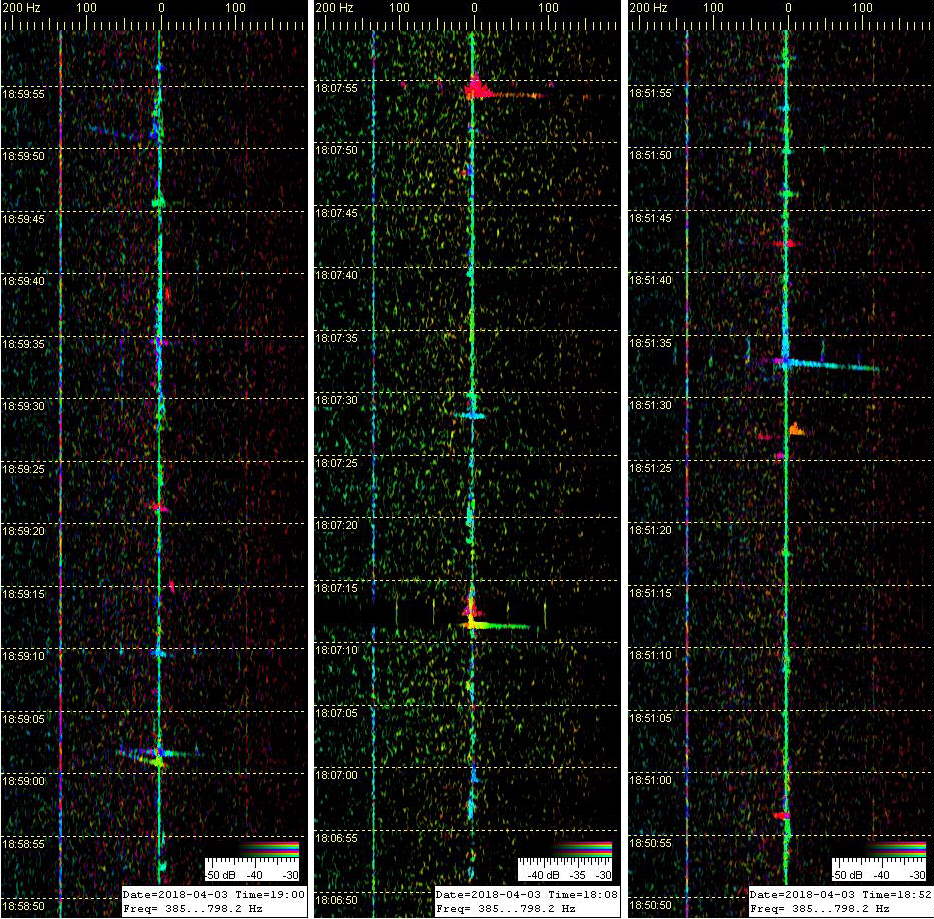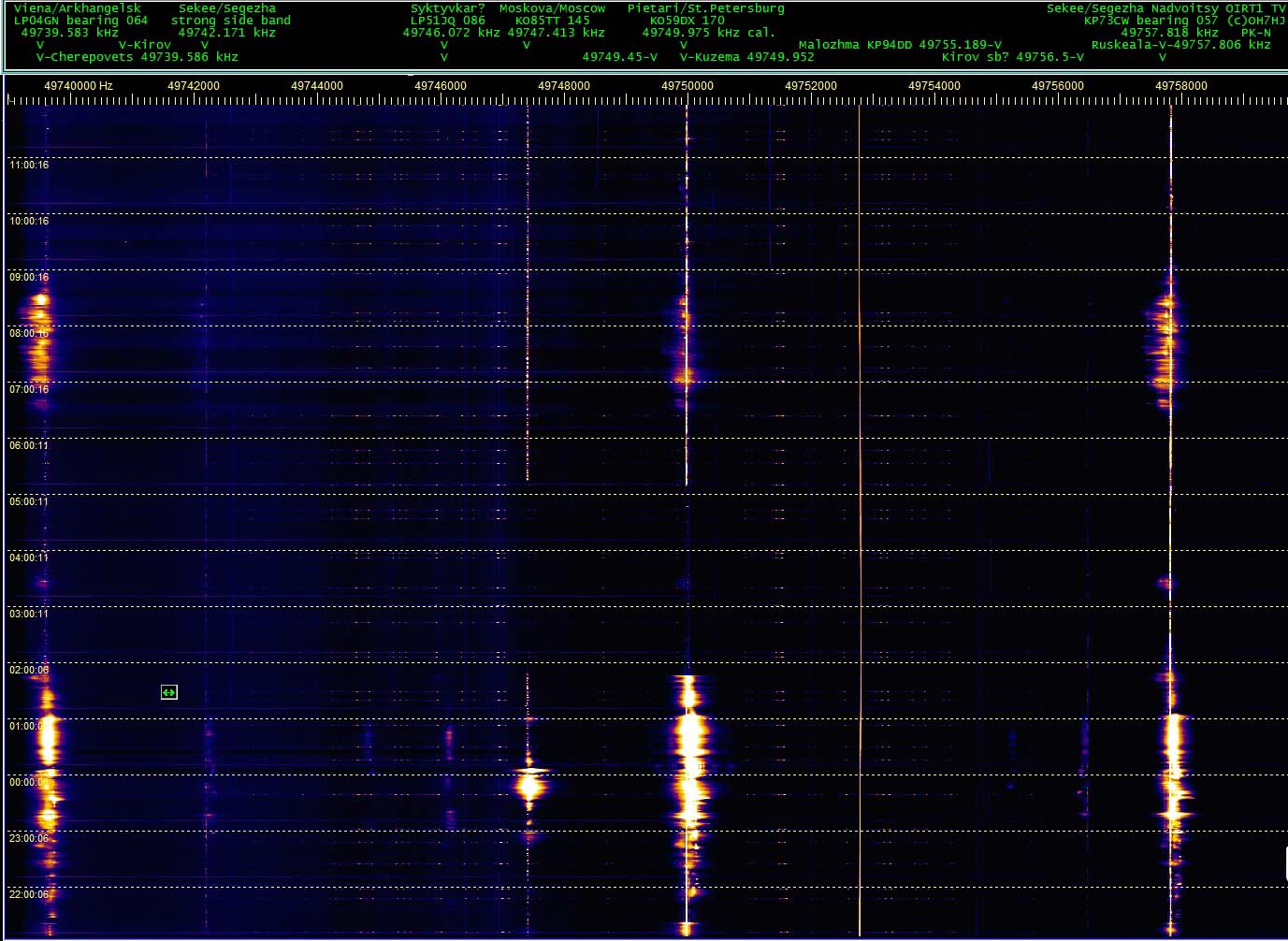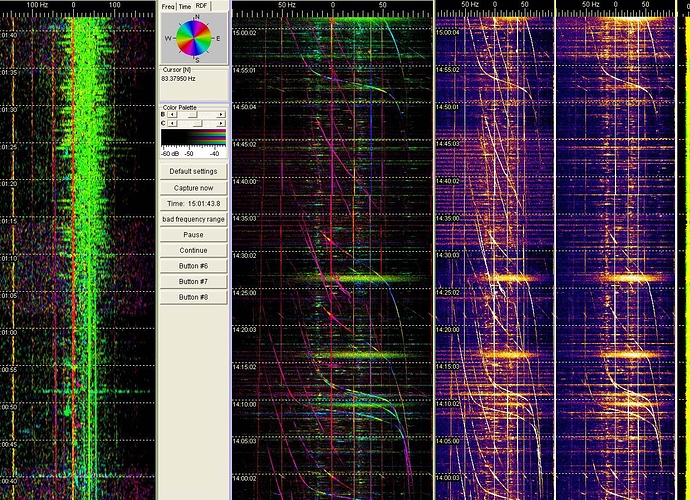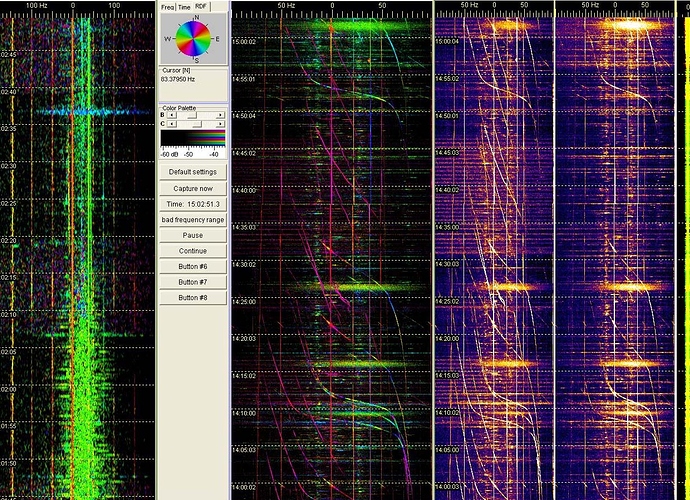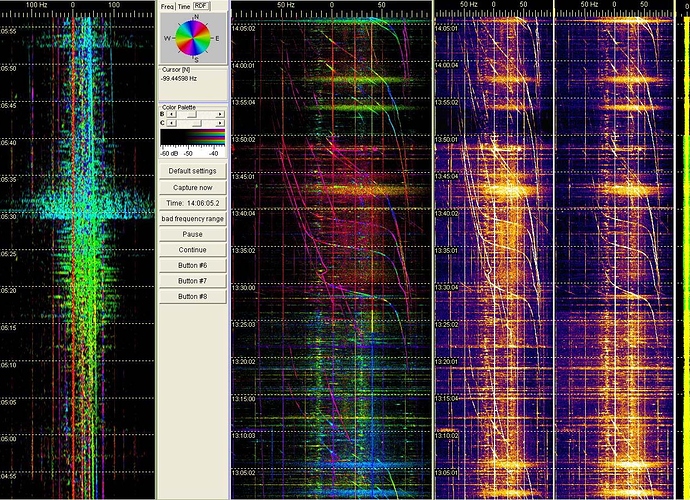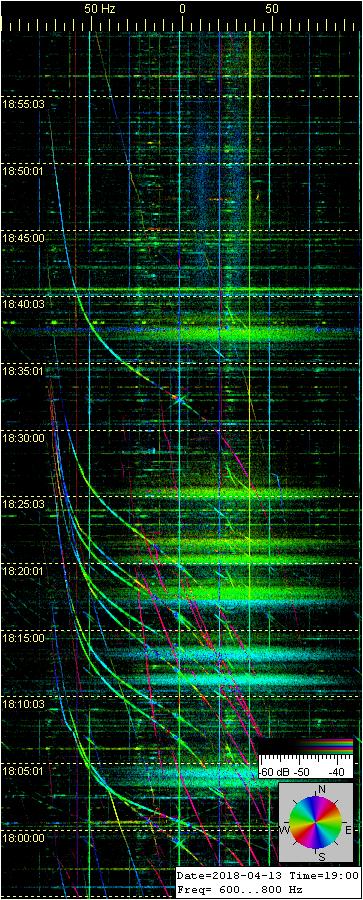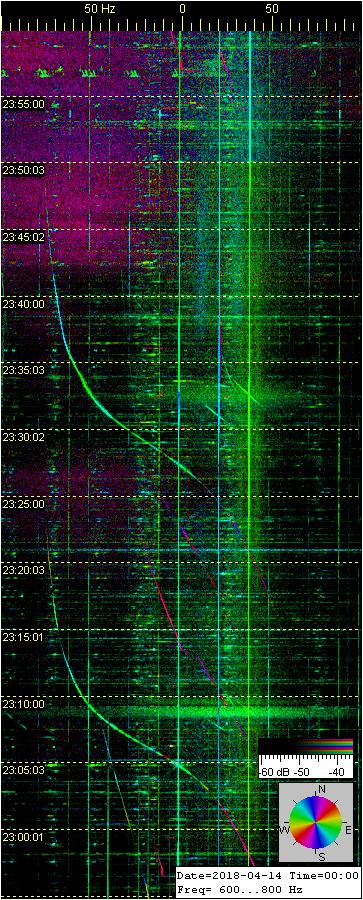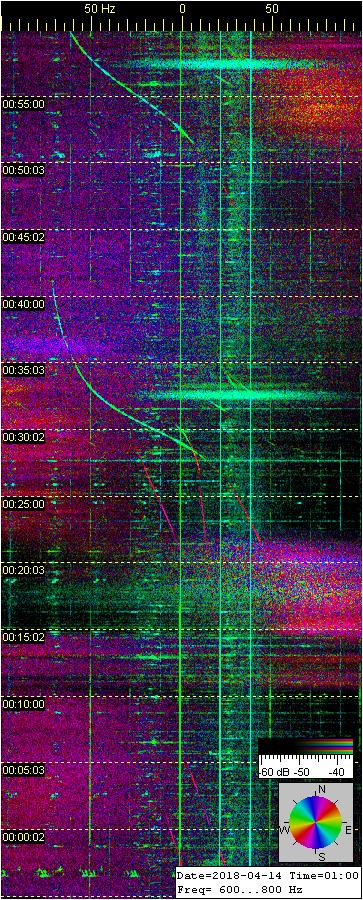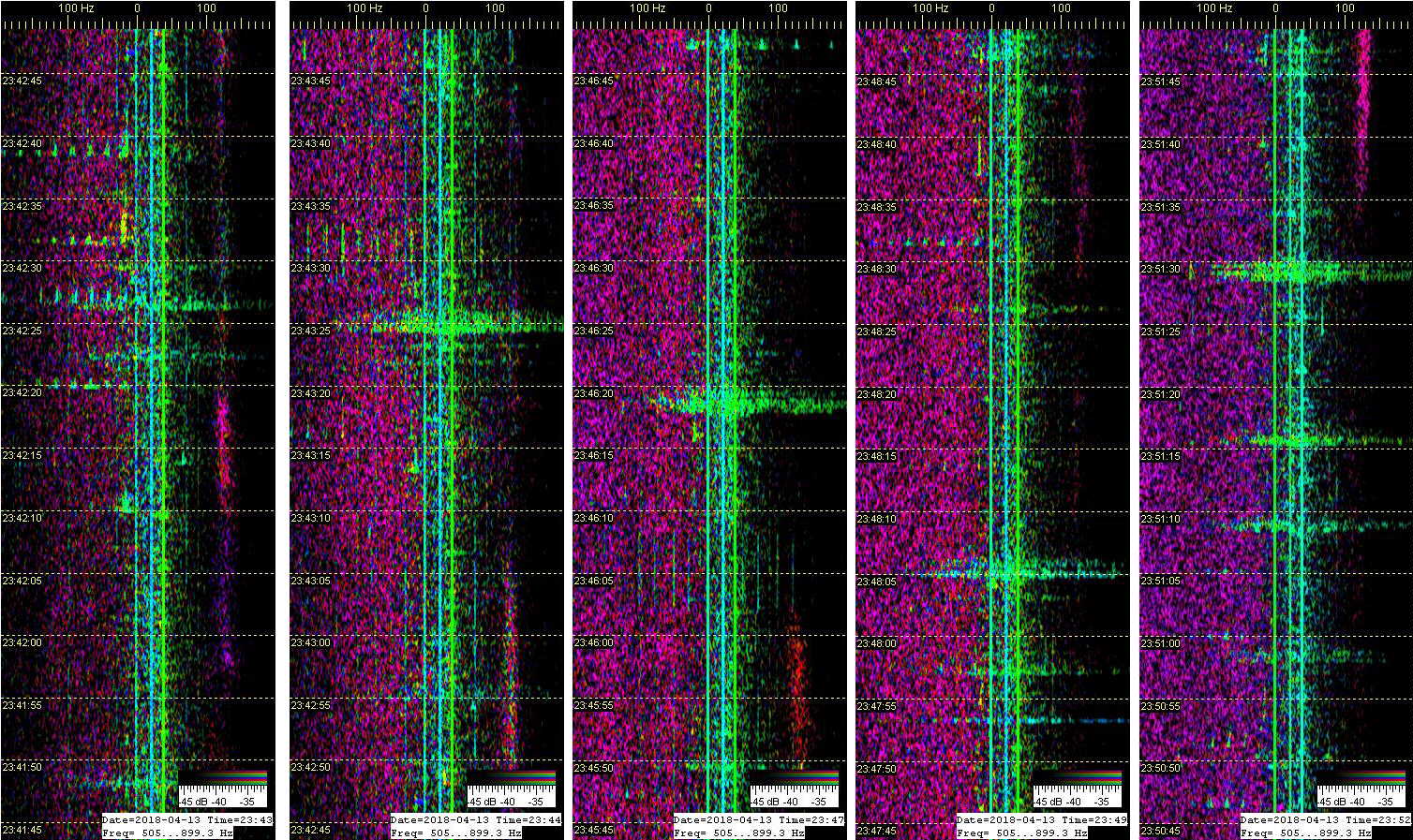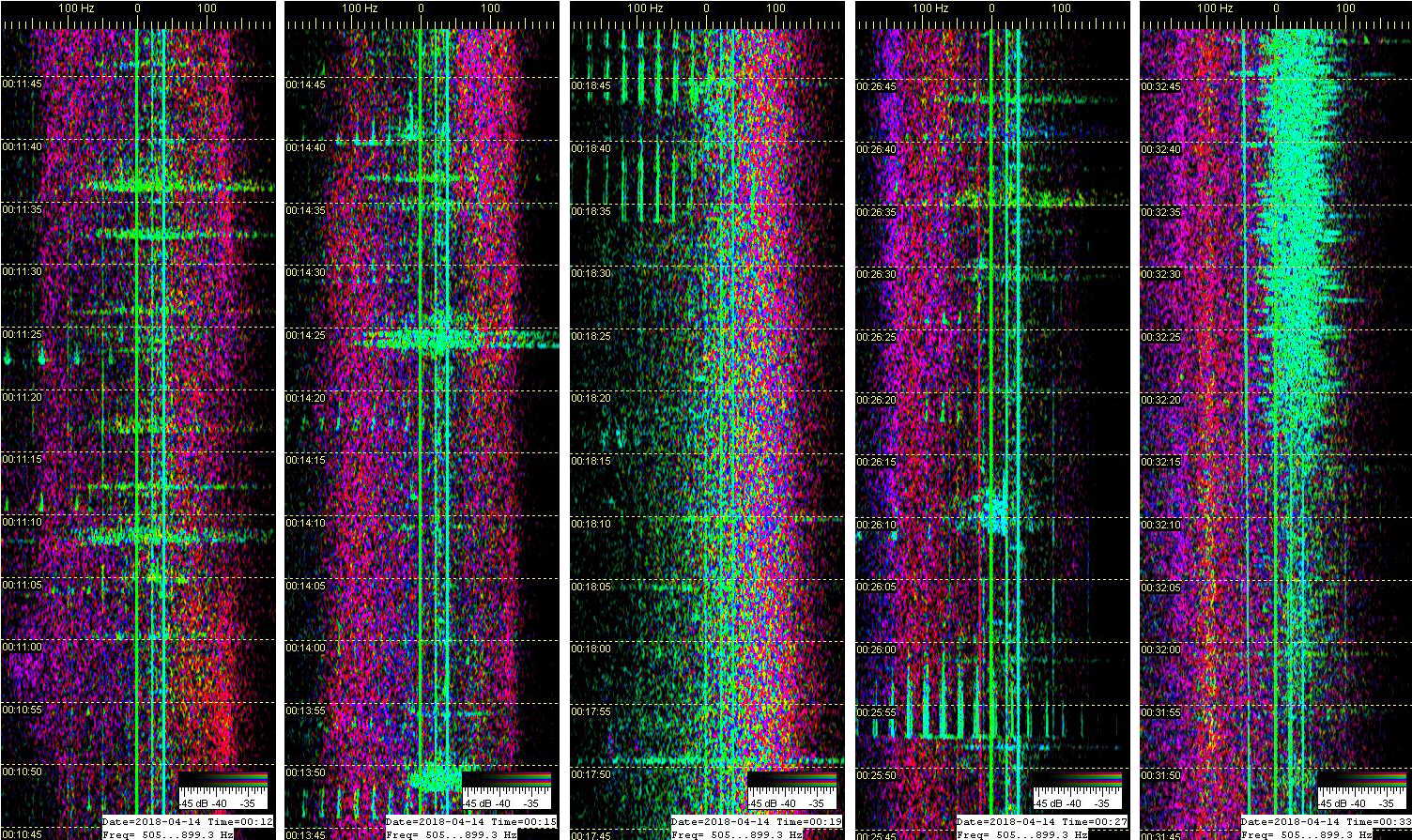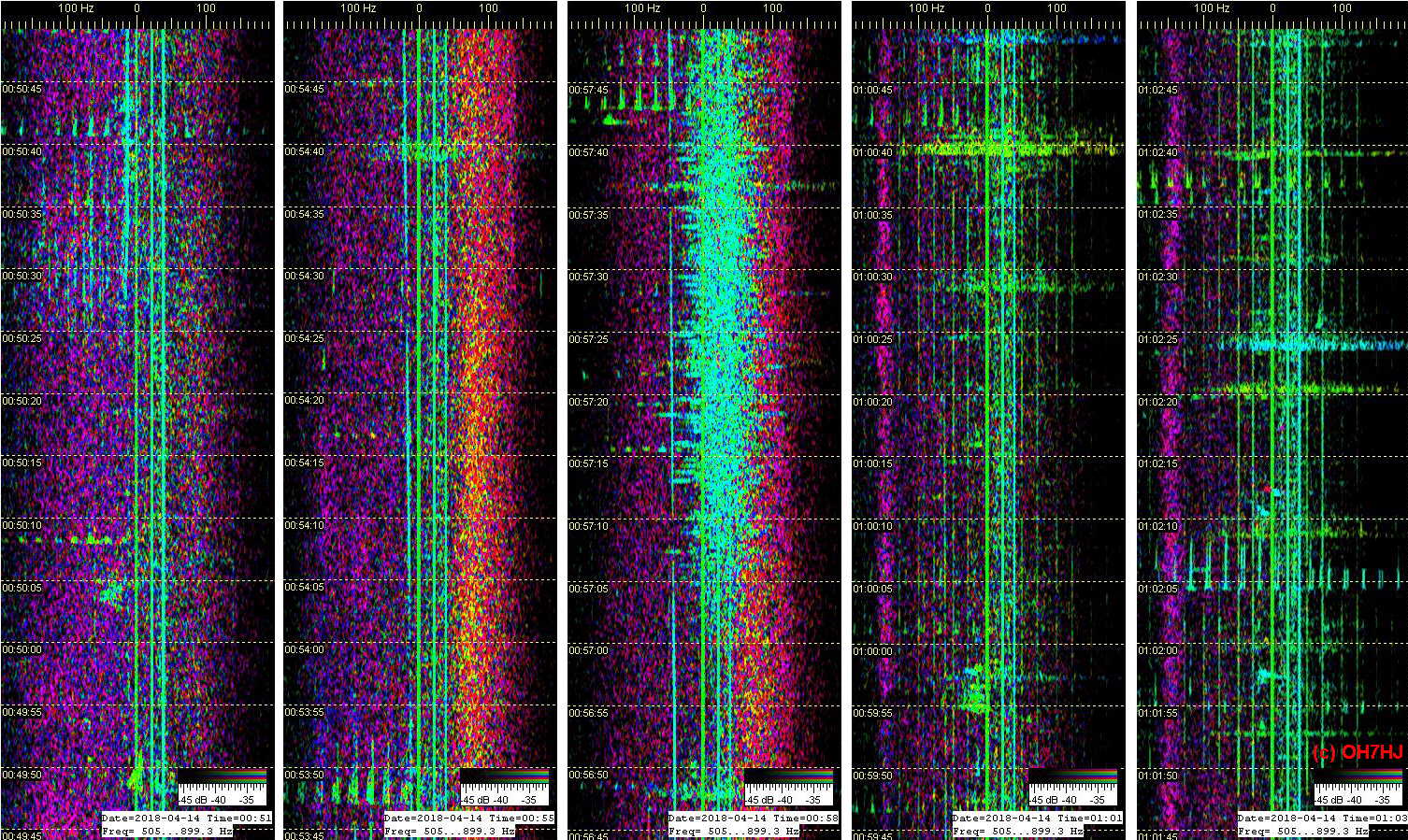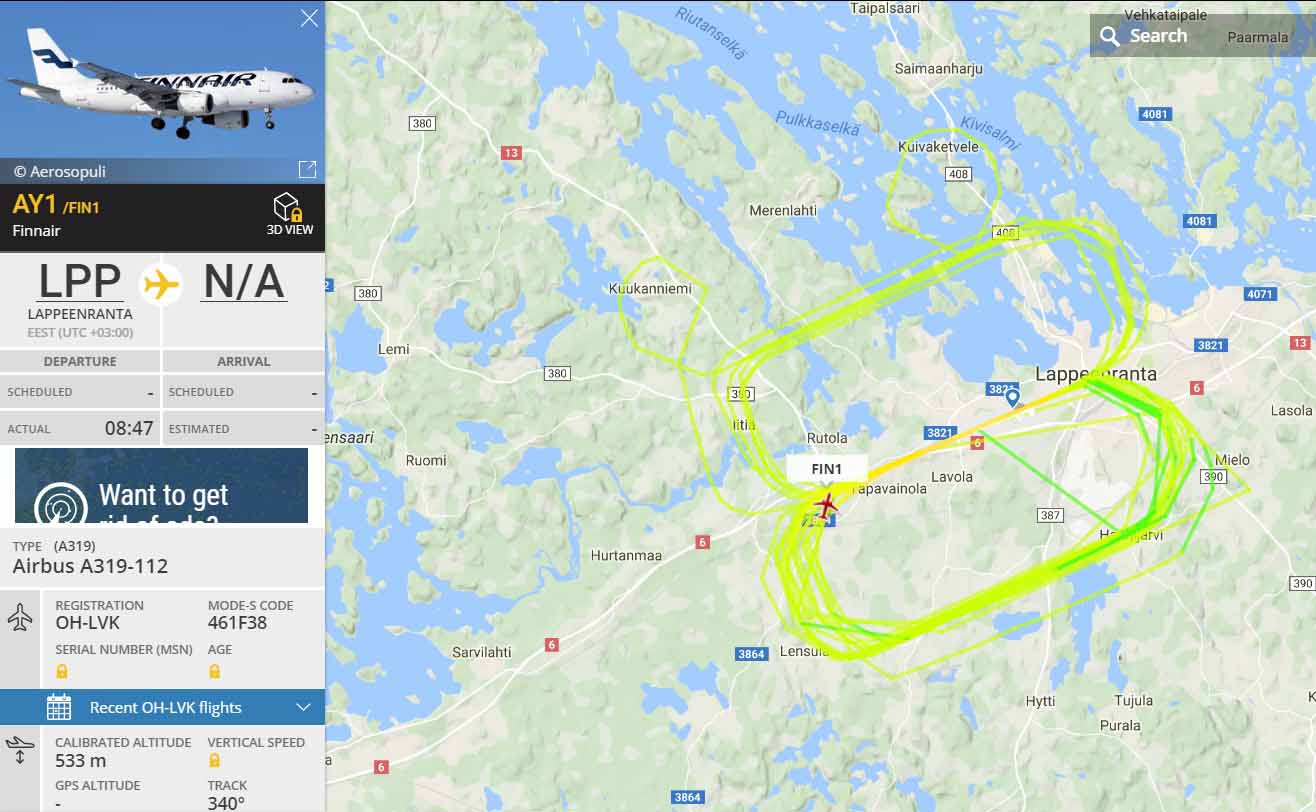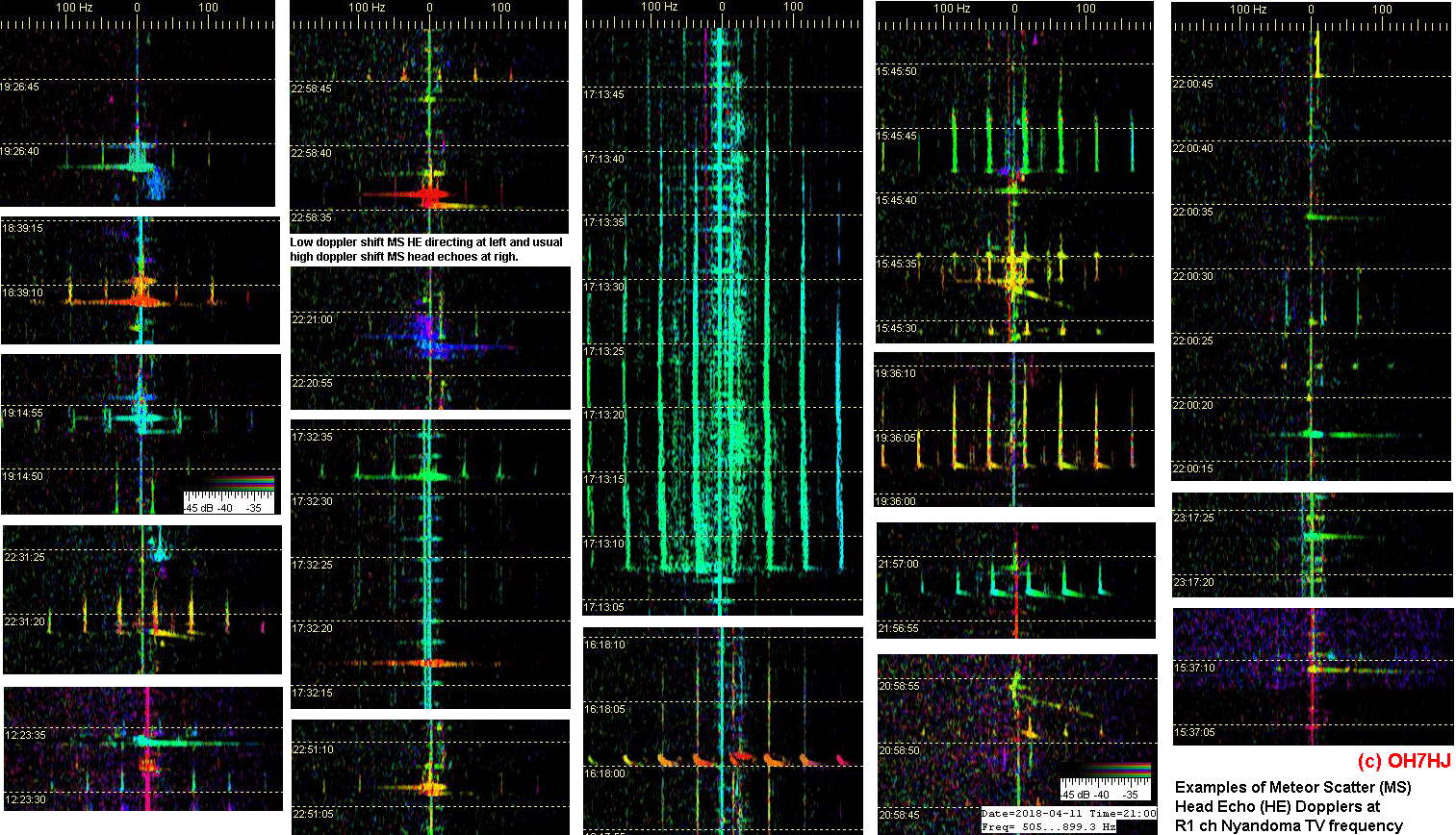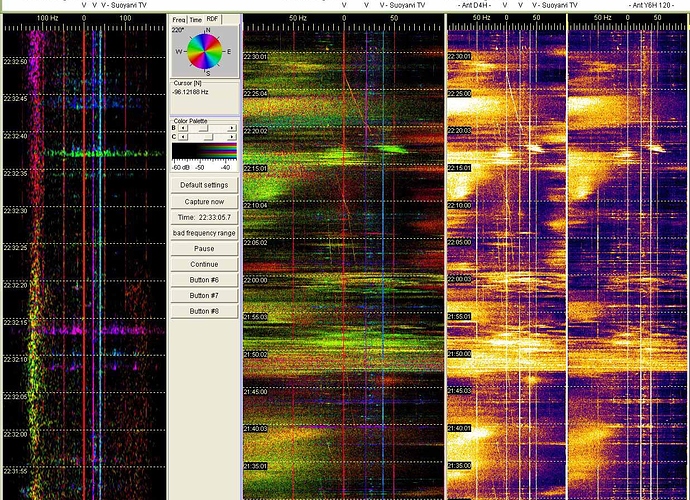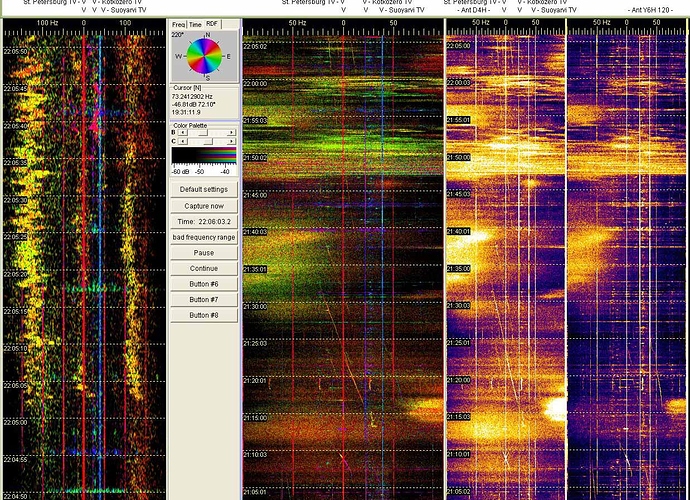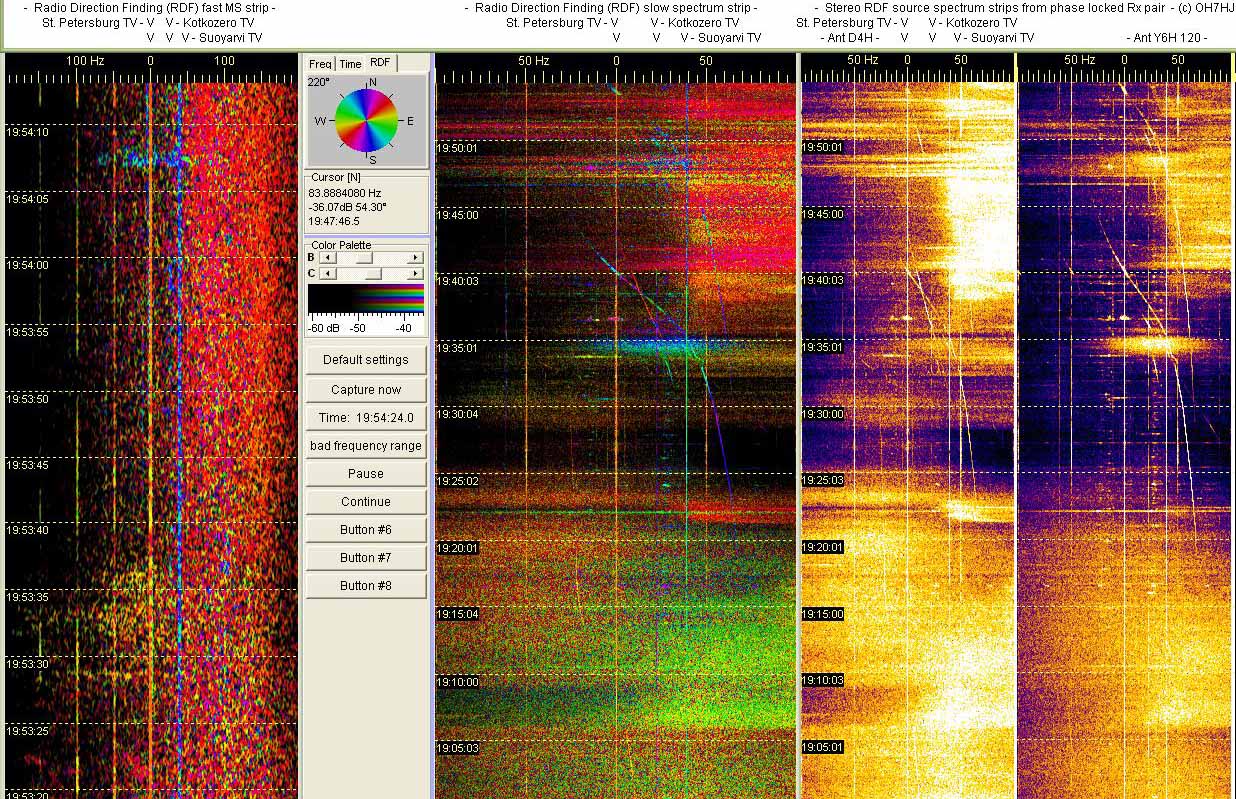Examples of meteor scatter ‘head echo’ dopplers captured by Esko OH2AUP from live ‘radar voice’ of OH7HJ R1 TV channel online streaming receiver. The receiving setup of this experiment is a 4-element almost omnidirectional 50 MHz horizontal dipole array with an RTL receiver and SDR Console V3 software streaming a 22 kHz wide TV channel spectrum as two wide band USB sound streams divided to both stereo channels of single MP3 online voice audio channel.
The fast sweep multi TV carrier spectrums by Esko show meteor scatter (MS) narrow dopplers scattered from the very fast velocity of meteors striking down to upper atmosphere and creating ionized trail which scatters TV carriers of 6m band R1 TV channel. Some of the MS doppler pics show meteor dopplers simultaneously on two TV carrier frequencies.
These actual MS head echo dopplers are rather weak which makes it difficult to capture them on low power radio beacons. With high power beacons like these TV carriers meteor dopplers are much easier to spot. Their usual spread spectrum ‘tails’ following meteor head echo dopplers are strong and long lasting which makes the electric discharge tail scatters very easy to capture compared to head echo dopplers of actual meteors.
However, these natural ionospheric electrostatic discharges alone are not necessarily evidence of actual meteor hits. Also, not all meteor head echo dopplers trigger these spread spectrum electric discharge tails. Natural high sky electric discharge scatters (EDS) occur all the time and vast majority of them appear lack any evidence of meteor head echo dopplers. This suggests that most of these longer than MS head echo doppler lasting natural ionospheric discharges are ignited spontaneously, possibly by voltage of naturally accumulating atmospheric electrostatic charge exceeding threshold level of ionospheric electricity discharge.
Meteor Scatter Spectrum Strips
Esko tells that the attached pics are copied with a single audio channel spectrum software so the lower and upper R1 channel TV carrirers show on the same MS strips. Fortunately they overlap so they can be spotted.
These strips do not have frequency or time scales but his fast registered strips have a sweep of 43.066 Hz per pixel and zero beat is the low edge os the strips representing freqs 49739 and 49755 kHz. Middle registered strips are 4 times slower.
For example, the highest strong carrier of this middle registered MS strip is St Petersburg TV and below the center one with many EDS is Moscow TV. Near low edge is Syktyvkar TV: midle20180227060100_20180227060739 - 7000 - 12000 Hz - MS doppler up left - MS head echo dopplers from online live OH7HJ radar stream captured by OH2AUP.gif
Online Radar Voice
The online multi-static radar voice is freely available for online listeners of AS dopplers as well Es and Aurora scatter or MS spotters. Lower R1 band is on left stereo cahnnel and its audio zero beat is 49739 kHz. Higher TV band starts at 49755 kHz zero beat and it is on right stereo channel.
The sound can be picked up from standard web browser through a virtual audio cable software like VB-Audio Cable by setting it as ‘Default Audio Device’ on windows playback devices menu. Then the virtual cable is selected as input audio device for the sound spectrum analyzer software you prefer. Set it listen to left stereo channel for low R1 TV band carriers and to right stereo channel for high band carriers.
These streams are rather easy to spot by anyone familiar with audio spectrum analyzer software like Spectrum Lab. Please ask me for ready Spectrum Lab INI or USR setup files for either wide band R1 carriers or for detail strips of each TV carrier.
Links:
‘Radar voice’ is available online at MPnet multi-static radar demo page: maanpuolustus.net/pages/tutka/
DL4YHF’s Audio Spectrum Analyzer Spectrum Lab download: qsl.net/dl4yhf/spectra1.html
Spotting MS from among ED scatters - 1: Aircraft Scatter - Lentokoneheijastus ja sen doppleri.
Spotting MS from among ED scatters - 3: viewtopic.php?f=21&t=295&p=2498#p2498
Regards,
- Juha -
